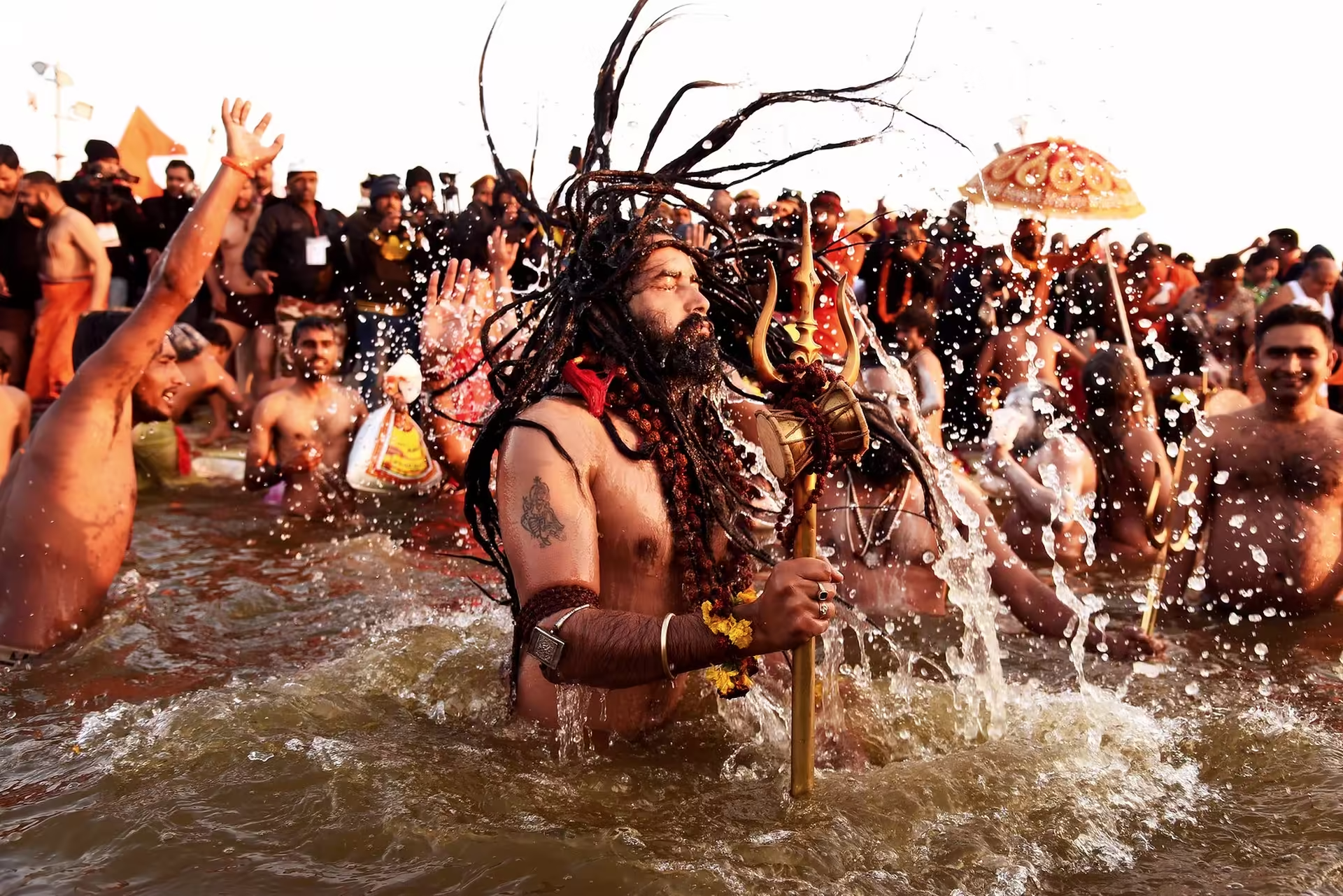EXCELLENTBased on 34 reviews Trustindex verifies that the original source of the review is Google.
Trustindex verifies that the original source of the review is Google. Κων/να Καραγιαννη2022-08-26If you are really seeking to find the truth then Sivaom School of Yoga is what you need. For me it is a life changing point.Trustindex verifies that the original source of the review is Google.
Κων/να Καραγιαννη2022-08-26If you are really seeking to find the truth then Sivaom School of Yoga is what you need. For me it is a life changing point.Trustindex verifies that the original source of the review is Google. Kiki Kostolidou2022-08-22Learning yoga at the Sivaom School of Yoga was a journey of awakening and deep knowledge. Becoming a teacher is a great responsibility and one has to be very well prepared to manage with human body, mind and soul. Studying yoga at the Sivaom School of Yoga I was exposed to the original Vedic scriptures and was prepared by my GuruJi Siddthartha Shiv Khanna to be able to teach the Sivaom practice, developed by himself and that includes a union of the four main branches of Yoga (Raja, Karma, Jann and Bhakti). By practicing this combination of teachings we are enabled to bring ourselves in to balance and a perfect alignment between body, mind and soul.Trustindex verifies that the original source of the review is Google.
Kiki Kostolidou2022-08-22Learning yoga at the Sivaom School of Yoga was a journey of awakening and deep knowledge. Becoming a teacher is a great responsibility and one has to be very well prepared to manage with human body, mind and soul. Studying yoga at the Sivaom School of Yoga I was exposed to the original Vedic scriptures and was prepared by my GuruJi Siddthartha Shiv Khanna to be able to teach the Sivaom practice, developed by himself and that includes a union of the four main branches of Yoga (Raja, Karma, Jann and Bhakti). By practicing this combination of teachings we are enabled to bring ourselves in to balance and a perfect alignment between body, mind and soul.Trustindex verifies that the original source of the review is Google. Vasiliki Fortoma2022-08-21The most authentic classes in Greece, is very important for the world to know that yoga its not just asan, I am very glad that the siva om school of yoga is out there spreading the real teachings! If you are looking for yoga classes or trainings thats the place you need.Trustindex verifies that the original source of the review is Google.
Vasiliki Fortoma2022-08-21The most authentic classes in Greece, is very important for the world to know that yoga its not just asan, I am very glad that the siva om school of yoga is out there spreading the real teachings! If you are looking for yoga classes or trainings thats the place you need.Trustindex verifies that the original source of the review is Google. Sims Sim2021-02-03Siddharth is a great teacher. Due to my constant back pain I had reached out to him to help me strengthen my back and get some movement. He guided me throughout the sessions and got me back to where I was able to go out for a walk and have confidence in myself that I could do things and have a normal life despite the constant back pain. Now I am mobile however it’s a work in progress and with Siddharth’s guidance I am sure we will get there.Trustindex verifies that the original source of the review is Google.
Sims Sim2021-02-03Siddharth is a great teacher. Due to my constant back pain I had reached out to him to help me strengthen my back and get some movement. He guided me throughout the sessions and got me back to where I was able to go out for a walk and have confidence in myself that I could do things and have a normal life despite the constant back pain. Now I am mobile however it’s a work in progress and with Siddharth’s guidance I am sure we will get there.Trustindex verifies that the original source of the review is Google. Shivani Talwar2021-02-02I have attended a few other yoga classes but Siddhartha is the best yoga teacher....his way of teaching yoga not only gives you a healthy lifestyle changes your outlook on life making you a mentally stronger person ....SivaOm is a highly recommended place .Trustindex verifies that the original source of the review is Google.
Shivani Talwar2021-02-02I have attended a few other yoga classes but Siddhartha is the best yoga teacher....his way of teaching yoga not only gives you a healthy lifestyle changes your outlook on life making you a mentally stronger person ....SivaOm is a highly recommended place .Trustindex verifies that the original source of the review is Google. MARINA PAPPA2020-06-18I had my first class at Sivaom school of yoga a few weeks before and it was a unique experience. What I loved most was the feeling coming close to myself, finding joy, connection and deep focus. Many teachers can teach you the physical alignment of yoga asanas but Siddharta spreads the teaching of enlightenment, showing others that the greatest kingdom one can have dominion over is the realm of the heart!Trustindex verifies that the original source of the review is Google.
MARINA PAPPA2020-06-18I had my first class at Sivaom school of yoga a few weeks before and it was a unique experience. What I loved most was the feeling coming close to myself, finding joy, connection and deep focus. Many teachers can teach you the physical alignment of yoga asanas but Siddharta spreads the teaching of enlightenment, showing others that the greatest kingdom one can have dominion over is the realm of the heart!Trustindex verifies that the original source of the review is Google. Annika Juul2020-06-18If you are looking for an authentic yoga experience or teacher training then I cannot recommend Sivaom school of yoga enough!! Siddhartha is a unique and extremely knowledgeable teacher, his classes offer a wealth of information, taught with humour and love with no question is left unanswered. I have done several trainings but none like Sivaoms teacher training. Highly, highly recommend, 5 stars are not enough🙏Trustindex verifies that the original source of the review is Google.
Annika Juul2020-06-18If you are looking for an authentic yoga experience or teacher training then I cannot recommend Sivaom school of yoga enough!! Siddhartha is a unique and extremely knowledgeable teacher, his classes offer a wealth of information, taught with humour and love with no question is left unanswered. I have done several trainings but none like Sivaoms teacher training. Highly, highly recommend, 5 stars are not enough🙏Trustindex verifies that the original source of the review is Google. Kelly Micheloudaki2019-04-09Being the only yoga teacher from India in Greece it is a privilege for one to learn yoga from Siddhartha. Personally I have been to India and couldn't find the same quality of yoga class. Siddhartha eats, drinks and breathes yoga and takes his students' development and well-being very seriously. I highly recommend this school
Kelly Micheloudaki2019-04-09Being the only yoga teacher from India in Greece it is a privilege for one to learn yoga from Siddhartha. Personally I have been to India and couldn't find the same quality of yoga class. Siddhartha eats, drinks and breathes yoga and takes his students' development and well-being very seriously. I highly recommend this school
Siva Om (Registered Office)
39/71 West Punjabi Bagh,
New Delhi,
India – 110026
Phone: +91-9810900127
SivaOm School of Yoga, Mikras Asias 31, Athina 115 27 Greece
+30-6909729311 to speak in English.
Phone: +30-6909729311

Get exclusive Yoga stories, retreats and spirituality topics in your email.
By submitting this form, you are consenting to receive news, articles & marketing emails from: SivaOm School of Yoga (Registered Office), 39/71 West Punjabi Bagh, New Delhi, India – 110026, https://sivaom.com/
You can revoke your consent to receive emails at any time by using the SafeUnsubscribe link, found at the bottom of every email.
Emails are serviced by MAILCHIMP
